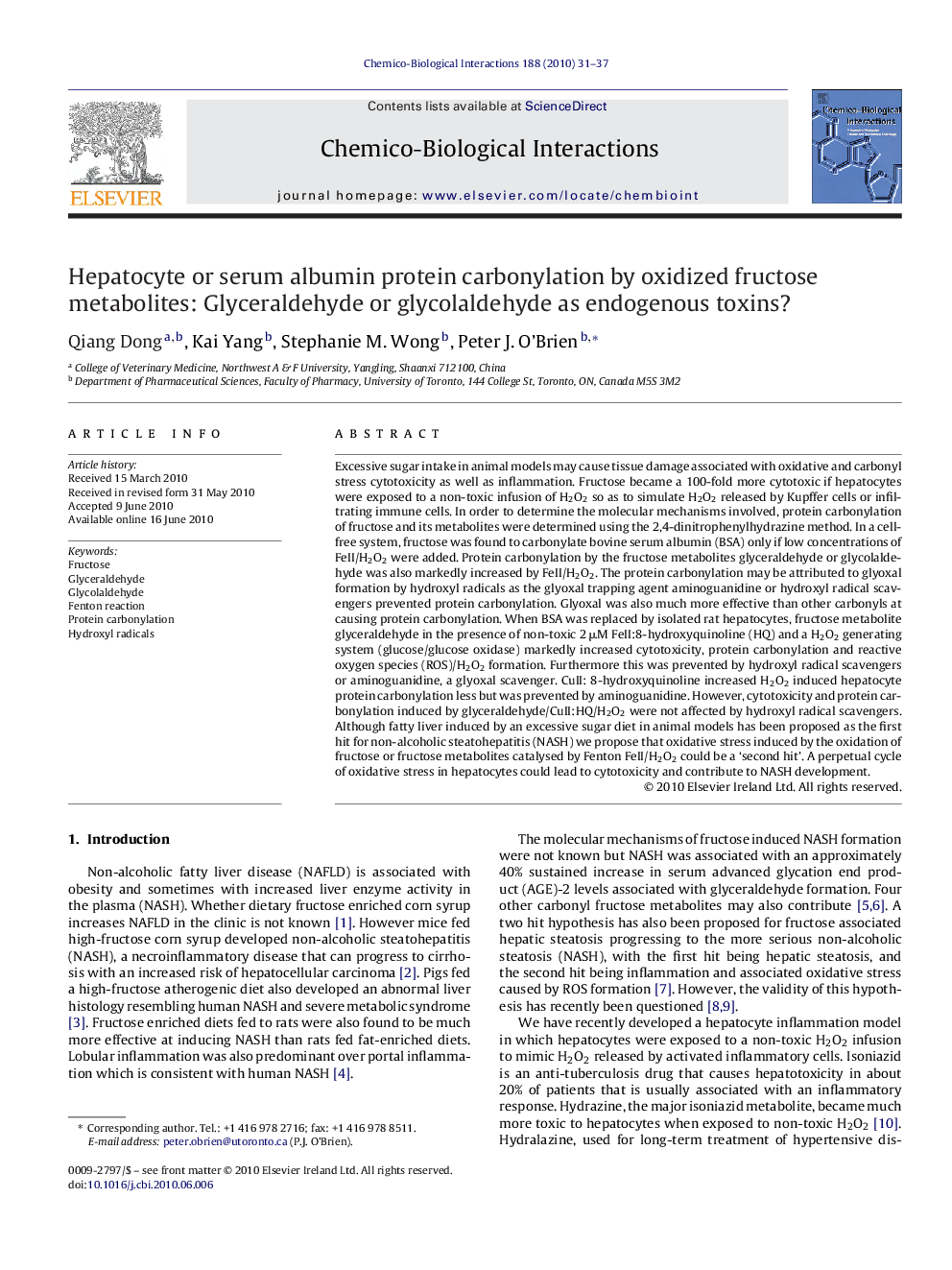| Article ID | Journal | Published Year | Pages | File Type |
|---|---|---|---|---|
| 2581043 | Chemico-Biological Interactions | 2010 | 7 Pages |
Excessive sugar intake in animal models may cause tissue damage associated with oxidative and carbonyl stress cytotoxicity as well as inflammation. Fructose became a 100-fold more cytotoxic if hepatocytes were exposed to a non-toxic infusion of H2O2 so as to simulate H2O2 released by Kupffer cells or infiltrating immune cells. In order to determine the molecular mechanisms involved, protein carbonylation of fructose and its metabolites were determined using the 2,4-dinitrophenylhydrazine method. In a cell-free system, fructose was found to carbonylate bovine serum albumin (BSA) only if low concentrations of FeII/H2O2 were added. Protein carbonylation by the fructose metabolites glyceraldehyde or glycolaldehyde was also markedly increased by FeII/H2O2. The protein carbonylation may be attributed to glyoxal formation by hydroxyl radicals as the glyoxal trapping agent aminoguanidine or hydroxyl radical scavengers prevented protein carbonylation. Glyoxal was also much more effective than other carbonyls at causing protein carbonylation. When BSA was replaced by isolated rat hepatocytes, fructose metabolite glyceraldehyde in the presence of non-toxic 2 μM FeII:8-hydroxyquinoline (HQ) and a H2O2 generating system (glucose/glucose oxidase) markedly increased cytotoxicity, protein carbonylation and reactive oxygen species (ROS)/H2O2 formation. Furthermore this was prevented by hydroxyl radical scavengers or aminoguanidine, a glyoxal scavenger. CuII: 8-hydroxyquinoline increased H2O2 induced hepatocyte protein carbonylation less but was prevented by aminoguanidine. However, cytotoxicity and protein carbonylation induced by glyceraldehyde/CuII:HQ/H2O2 were not affected by hydroxyl radical scavengers. Although fatty liver induced by an excessive sugar diet in animal models has been proposed as the first hit for non-alcoholic steatohepatitis (NASH) we propose that oxidative stress induced by the oxidation of fructose or fructose metabolites catalysed by Fenton FeII/H2O2 could be a ‘second hit’. A perpetual cycle of oxidative stress in hepatocytes could lead to cytotoxicity and contribute to NASH development.
